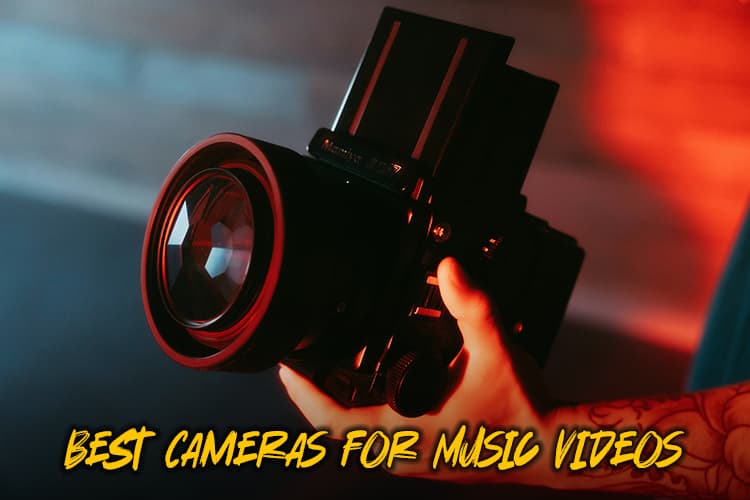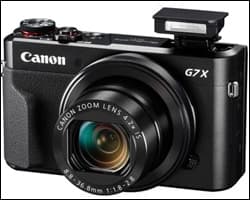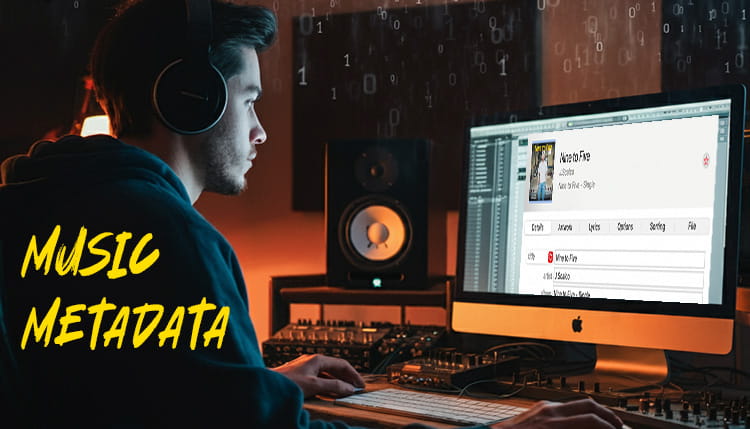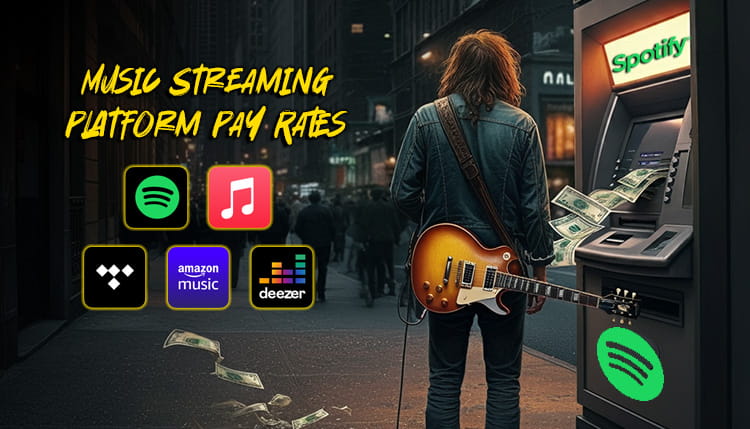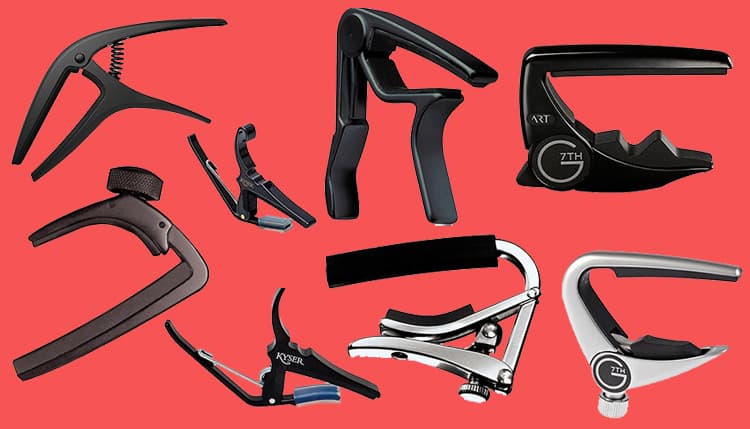Lights, camera, action! 🎬
In the world of music videos, visual storytelling is just as important as the beats themselves.
Did you know that 86% of marketers say video has helped them increase traffic to their website?
That’s why when you make a music video choosing the right camera is crucial.
Whether you’re an up-and-coming artist or a seasoned pro, we’ve got the inside scoop on the best cameras for music videos that’ll make your visuals pop and your audience groove.
Let’s dive into the top picks for 2024!
What to Look for in a Camera for Music Videos
When I first started looking for cameras to add to my collection of music video production gear, I was totally clueless.
Man, did I make some rookie mistakes!
I remember buying this cheap camcorder thinking it’d be perfect, only to end up with grainy footage that looked like it was shot through a potato. Live and learn, right?
So, let me save you some headaches and share what I’ve figured out over the years.
Image Quality and Resolution
First up, image quality and resolution are huge.
You want your artist to look crisp and clear, not like some blurry blob on screen.
I always aim for at least 1080p these days, but 4K is where it’s at if you can swing it.
Trust me, your future self will thank you when you’re editing and can zoom in without losing quality.
Light
Next, don’t sleep on low-light performance.
A lot of music videos have moody lighting or are shot in dimly lit clubs.
I learned this the hard way when I tried to film a band in a dark bar and ended up with footage that looked like it was shot on a flip phone from 2005.
Look for cameras with good ISO range and larger sensors – they’ll be your best friends in those low-light situations.
Frame Rate
Now, let’s talk frame rate options.
This is where you can get creative and add some cool effects to your videos.
I love shooting at 60fps or even 120fps for those sweet slow-mo shots.
Nothing adds drama like a slow-motion hair flip or a close-up of fingers flying across guitar strings.
Just remember, more frames means more storage space needed!
Audio
One thing that often gets overlooked is audio input capabilities.
Yeah, I know we’re talking about video here, but good audio is crucial.
You’ll want a camera with a decent built-in mic, but more importantly, one that lets you plug in an external microphone.
Trust me, it makes a world of difference when you’re syncing up the final audio in post.
Stabilization
Stabilization features are another biggie.
Nobody wants to watch a shaky video – it’s like being on a rollercoaster you didn’t sign up for.
Look for cameras with good in-body stabilization or ones that play nice with gimbals.
I once tried to hand-hold a camera for an entire music video shoot… let’s just say the results were not pretty.
Durability and Portability
Don’t forget about durability and portability.
You’ll be lugging this thing around to different locations, maybe even shooting outdoors.
I learned this lesson when I dropped my first “real” camera on a concrete floor. Spoiler alert: it didn’t survive the fall.
Look for something that can take a bit of a beating and isn’t too heavy to carry around all day.
Price
Lastly, consider the price point and value for money.
It’s easy to get starry-eyed over the fanciest, most expensive cameras out there.
But remember, a great music video is about creativity, not just having the most expensive gear. There are plenty of low budget music videos with millions of views.
Find something that fits your budget but still ticks most of the boxes we’ve talked about.
- Look for at least 1080p resolution, 4K if possible
- Good low-light performance is crucial
- Higher frame rates (60fps, 120fps) for slow-mo effects
- External audio input is a must
- Stabilization features for smooth shots
- Durable and portable design
- Balance features with your budget
Remember, the best camera is the one you’ll actually use and learn inside out.
Don’t get too caught up in the specs – focus on telling your story and making your artist look amazing.
Now go out there and make some killer music videos!
Top Budget-Friendly Cameras for Music Video Production
Alright, let’s talk about getting the most bang for your buck when it comes to cameras for music videos.
I’ve been there, trying to make magic happen on a shoestring budget. It ain’t always easy, but it’s definitely possible!
DSLR
First up, let’s chat about entry-level DSLR options.
These babies are like the Swiss Army knives of the camera world – versatile and won’t break the bank.
I started out with a Canon Rebel series, and let me tell you, it was a game-changer.
The image quality was leagues above my old point-and-shoot, and it gave me room to grow as I learned more about manual controls.
One thing to keep in mind with DSLRs though – they can be a bit bulky.
I remember lugging mine around to gigs, feeling like I was carrying a brick. But hey, no pain no gain, right?
Plus, the interchangeable lenses give you so much creative freedom.
You can go from wide-angle shots of the whole band to close-ups of the lead singer’s emotive face without missing a beat.
Mirrorless Cameras
Now, if you want something a bit more compact, mirrorless cameras under $1000 are where it’s at.
These little powerhouses pack a serious punch without weighing you down.
I switched to a Sony a6000 series a few years back and was blown away by how much easier it was to run and gun on music video shoots.
The autofocus on these mirrorless cameras is usually top-notch too.
No more frustration trying to keep your rockstar in focus as they bounce around the stage!
And let’s not forget about the silent shooting feature – perfect for those intimate acoustic sessions where you don’t want to disrupt the vibe with a noisy shutter.
Compact Cameras
But what if you’re really strapped for cash? Don’t worry, I’ve got you covered.
There are some compact cameras with impressive video features that won’t cost you an arm and a leg.
I’m talking about cameras like the Sony RX100 series or the Canon G7X. These little guys can shoot 4K video and fit in your pocket – talk about convenience!
I remember using a compact camera for a last-minute music video shoot when my main camera died. Was it ideal? Nah.
But did we still end up with a cool video? You bet! Sometimes limitations can spark creativity, y’know?
Smartphone Cameras
And let’s not forget about the camera that’s probably in your pocket right now – your smartphone.
Smartphone alternatives for music video creation have come a long way, baby. I’ve seen some killer music videos shot entirely on iPhones or high-end Android devices.
The trick with smartphone videos is good lighting and stability. Invest in a cheap ring light and a smartphone gimbal, and you’ll be amazed at the results you can get.
Plus, with apps like Filmic Pro, you can get manual controls that rival dedicated cameras.
Here’s a quick rundown of some budget-friendly music video cameras
- Canon Rebel series (great entry-level DSLR)
Canon Rebel Series - Sony A6000 series (compact mirrorless powerhouse)
Sony A6000 Series - Sony RX100 or Canon G7X (high-quality compact cameras)
Sony RX100 Canon G7X - Latest iPhone or high-end Android (smartphone option)
iPhone
Remember, it’s not about having the most expensive gear – it’s about knowing how to use what you’ve got.
I’ve seen amazing videos shot on cheap cameras and terrible videos shot on expensive ones.
It’s all about the creativity and passion you bring to the table.
So don’t let a tight budget hold you back. Grab whatever camera you can afford, learn its ins and outs, and start creating.
Who knows? Your next music video might just be the one that goes viral!
Mid-Range Music Video Cameras That Pack a Punch
Okay, so you’ve outgrown your entry-level camera and you’re ready to step up your game. Welcome to the world of mid-range cameras, my friend! This is where things start to get really exciting.
Versatility
Let’s kick things off with versatile cameras for both photography and videography.
I remember when I first got my hands on a Canon EOS R – it was like Christmas morning!
These hybrid cameras are perfect for music video production because they let you easily switch between stills and video.
Need to grab some promo shots of the band? No problem. Want to shoot a killer music video? You’re covered.
One thing I love about these mid-range options is the flexibility they offer. You’re not stuck with just one type of shot.
You can go from a wide-angle view of the whole stage to a tight close-up of the drummer’s hands without missing a beat.
It’s like having a whole production team in one camera!
Autofocus
Now, let’s talk about models with excellent autofocus for dynamic shots. This is where mirrorless cameras really shine.
I once tried to manually focus on a lead singer who was bouncing around like a jackrabbit on caffeine. Let’s just say the results were… less than stellar.
But with the advanced autofocus systems in cameras like the Sony A7 III or the Fujifilm X-T4, keeping your subject in focus is a breeze.
These cameras use things like eye-tracking autofocus, which is basically like magic.
It locks onto your subject’s eyes and keeps them in focus no matter where they move. It’s a game-changer for music videos where your artists are constantly in motion.
Image Stabilization
Another feature that’s worth its weight in gold is built-in image stabilization. I can’t tell you how many times I’ve cursed myself for not bringing a tripod to a shoot.
But with in-body image stabilization (IBIS), you can get smooth, steady shots even when you’re hand-holding the camera.
I remember shooting a behind-the-scenes video for a band in a tiny, crowded green room. There was no space for a tripod, but thanks to IBIS, the footage came out looking like it was shot on a gimbal.
It’s like having a steady hand, even when you’ve had one too many cups of coffee!
Color Science
Now, let’s talk about color science. This is one of those things that separates the pros from the amateurs.
Cameras with good color science, like many of the Panasonic models, give you beautiful, natural colors right out of the camera.
This means less time fiddling with color correction in post-production and more time actually creating.
I once spent hours color grading a music video to fix the skin tones in a video shot on a camera with poor color science. Never again!
Now, I always look for cameras that produce pleasing colors straight out of the box. Your future self will thank you when you’re not pulling all-nighters trying to make your footage look good.
Here’s a quick list of some mid-range music video cameras to consider
- Canon EOS R or RP (great hybrid options)
Canon EOS R - Sony A7 III (excellent autofocus and low-light performance)
Sony a7iii - Fujifilm X-T4 (beautiful colors and great in-body stabilization)
Fuji X-T4 - Panasonic GH5 (video powerhouse with great color science)
Panasonic GH5
Remember, the best camera is the one that fits your specific needs and shooting style. Don’t just go for the most expensive option – think about what features are most important for the type of music videos you want to create.
And hey, don’t forget to have fun with it! These mid-range cameras open up a world of creative possibilities.
Experiment with different frame rates, play with the depth of field, try out some crazy angles.
The more you push yourself creatively, the better your music videos will be.
Now go out there and make some magic happen!
High-End Cameras for Professional Music Video Production
Alright, buckle up folks, ’cause we’re about to enter the big leagues of music video production.
We’re talking high-end cameras that’ll make your footage look so good, you’ll think you’re watching a Hollywood blockbuster!
Cinema Cameras
First up, let’s chat about cinema cameras used in Hollywood productions.
Now, I’m not gonna lie, when I first got my hands on an ARRI Alexa, I felt like a kid in a candy store.
These beasts are the cream of the crop when it comes to image quality.
The dynamic range on these things is insane – you can shoot in bright sunlight and deep shadows in the same frame, and still get all the detail you need.
But let me tell you, there’s a learning curve with these bad boys.
I remember spending hours just trying to figure out all the settings on my first cinema camera.
And don’t even get me started on the workflow – you’ll need some serious storage and processing power to handle the massive files these cameras produce.
Full Frame Cameras
Next up, we’ve got full-frame mirrorless cameras with exceptional low-light performance.
Cameras like the Sony A7S III or the Canon EOS R5 are absolute game-changers for music video production.
I once shot a video in a dimly lit jazz club with one of these, and the footage looked like it was filmed in broad daylight.
It’s like these cameras can see in the dark!
The shallow depth of field you can get with full-frame sensors is another huge plus.
Want to make your artist pop against a blurry background? No problem.
These cameras will give you that creamy bokeh that’ll make your videos look like a million bucks.
RAW Video
Now, let’s talk about cameras with RAW video output capabilities.
This is where things get really exciting for the post-production nerds out there (guilty as charged!).
Shooting in RAW gives you so much flexibility in post – it’s like having a time machine for your footage.
I remember the first time I color graded RAW footage. It was like painting with light and it brought my original idea and music video storyboard to life!
You can adjust exposure, white balance, and color to your heart’s content without losing quality.
Just be warned – once you go RAW, you’ll never want to go back. And your hard drives will hate you for it!
Advanced Color
Last but not least, we’ve got models with advanced color grading options.
Cameras like the Blackmagic Pocket Cinema Camera 6K Pro come with built-in LUTs and the ability to shoot in log profiles.
This means you can get that cinematic look right in camera, or have a solid starting point for more advanced color grading in post.
I once spent an entire weekend experimenting with different LUTs on a music video shoot.
It was like trying on different pairs of sunglasses for your footage. Some looked cool, some looked crazy, but it was all part of the creative process.
Here’s a quick rundown of some high-end music video cameras to drool over
- ARRI Alexa Mini (the Hollywood standard)
Arri Alexa Mini - RED Komodo (compact cinema camera with amazing image quality)
RED Komodo - Sony A7S III (low-light beast with great autofocus)
Sony A7S III - Canon EOS R5 (high-resolution hybrid with 8K video)
Canon EOS R5 - Blackmagic Pocket Cinema Camera 6K Pro (affordable cinema camera with great color science)
Blackmagic Design
Now, I know what you’re thinking – “These cameras cost more than my car!” And yeah, they ain’t cheap.
But if you’re serious about taking your music video production to the next level, these are the tools that can help you get there.
Just remember – a fancy camera won’t automatically make you a great filmmaker.
It’s all about how you use it. So if you do decide to invest in one of these bad boys, make sure you take the time to really learn how to use it. Trust me, the results will be worth it!
Pros and Cons of all 13 Cameras
| Camera | Price Range | Pros | Cons |
|---|---|---|---|
Canon Rebel series | $400 – $900 |
|
|
Sony a6000 series | $500 – $1,200 |
|
|
Sony RX100 or Canon G7X | $600 – $1,300 |
|
|
Latest iPhone or high-end Android | $700 – $1,500 |
|
|
Canon EOS R or RP | $1,000 – $2,500 |
|
|
Sony A7 III | $1,800 – $2,200 |
|
|
Fujifilm X-T4 | $1,700 – $2,000 |
|
|
Panasonic GH5 | $1,300 – $1,800 |
|
|
ARRI Alexa Mini | $40,000+ |
|
|
RED Komodo | $6,000 – $7,000 |
|
|
Sony A7S III | $3,500 – $4,000 |
|
|
Canon EOS R5 | $3,500 – $4,000 |
|
|
Blackmagic Pocket Cinema Camera 6K Pro | $2,500 – $3,000 |
|
|
Essential Features for Music Video Cameras
Let’s get down to brass tacks and talk about the must-have features for any camera you’re considering for music video production.
I’ve learned these lessons the hard way, so listen up and save yourself some headaches!
4K Resolution
First things first, 4K resolution and beyond is pretty much standard these days.
I remember when I first switched from HD to 4K – it was like I’d been watching TV through a foggy window all my life and someone finally wiped it clean.
The detail is insane! Plus, shooting in 4K gives you the flexibility to crop and reframe in post without losing quality.
Trust me, you’ll thank yourself when you’re editing and realize you need to zoom in on that killer guitar solo.
High Frame Rate
Next up, high frame rate options are a game-changer for music videos.
Being able to shoot at 60fps, 120fps, or even higher opens up a world of creative possibilities.
Slow-mo shots of a drummer’s sticks hitting the cymbals or a singer’s hair whipping around can add so much drama to your video.
I once shot a green screen music video for this rapper at 120fps and the slow-mo shots of cash being thrown in the air looked absolutely epic!
Mic Inputs
Now, let’s talk audio. External microphone inputs are crucial, even if you’re planning to use the studio track in your final video.
Why? Because you’ll need good audio for syncing in post.
I learned this the hard way when I shot a full day of footage only to realize later that the built-in mic had picked up nothing but muffled garbage.
Don’t be like me – make sure your camera has a decent mic input!
LOG
For those of you who like to get fancy in post-production, log profiles for color grading flexibility are a must.
Shooting in log might look flat and boring at first, but it gives you so much more latitude when color grading.
It’s like having a blank canvas to paint on.
I remember the first time I graded log footage – it was like unlocking a secret level in a video game!
Stabilization
In-body image stabilization (IBIS) is another feature that can save your bacon, especially if you like to shoot handheld.
It’s like having a tiny steadicam built right into your camera.
I once shot an entire music video handheld with a camera that had IBIS, and the footage came out smooth as butter.
No more shaky cam unless you actually want it!
Connectivity
Lastly, don’t underestimate the importance of Wi-Fi and Bluetooth connectivity.
Being able to transfer files quickly or control your camera remotely can be a huge time-saver on set.
I’ve used my phone as a remote monitor
Final Thoughts on the Best Cameras for Music Videos
Whew! We’ve covered a lot of ground, from budget-friendly options to high-end professional gear.
Remember, the best camera for your music videos is the one that fits your creative vision and budget.
Don’t be afraid to start small and work your way up – even smartphone cameras can create stunning visuals these days.
According to a research study global YouTube watch time is over 250 million hours every single day.
Thats why the most important thing is to get out there and start shooting!
Your audience is waiting to see your creativity come to life.
So, what are you waiting for? Grab that camera, hit record, and let the music (and visuals) play! 🎵📽️
FAQs
What features should I look for in a camera for music videos?
When choosing a camera for music videos, prioritize these key features:
- High-quality video resolution (at least 4K)
- Good low-light performance
- Fast and accurate autofocus
- In-body image stabilization
- High frame rate options (60fps or higher)
- External microphone input
- Long battery life or continuous power option
Can I use a smartphone to shoot professional-looking music videos?
Yes, you can use a high-end smartphone to shoot professional-looking music videos. Modern smartphones offer:
- 4K video recording capabilities
- Advanced stabilization features
- Manual controls for exposure and focus
- Excellent low-light performance
- Wide-angle and telephoto lens options However, for the best results, consider using external lenses, a stabilizer, and a separate audio recorder.
What's the ideal budget for a camera to shoot music videos?
The ideal budget for a camera to shoot music videos ranges from $800 to $3000, depending on your needs:
- Entry-level: $800 – $1200 (e.g., Sony a6400, Canon M50 Mark II)
- Mid-range: $1200 – $2000 (e.g., Panasonic GH5, Fujifilm X-T4)
- High-end: $2000 – $3000 (e.g., Sony A7 III, Canon EOS R6) Remember to factor in additional costs for lenses, lighting, and audio equipment
How important is camera audio quality when shooting music videos?
Audio quality is crucial when shooting music videos. While visuals are important, poor audio can ruin the viewer’s experience. Consider these points:
- Use an external microphone or audio recorder for better sound quality
- Choose a camera with a microphone input jack
- Record audio separately and sync it in post-production for best results
- Invest in quality headphones to monitor audio while recording
- Consider the acoustic properties of your shooting location Remember, viewers might forgive slightly imperfect visuals, but they rarely tolerate poor audio in music videos.

